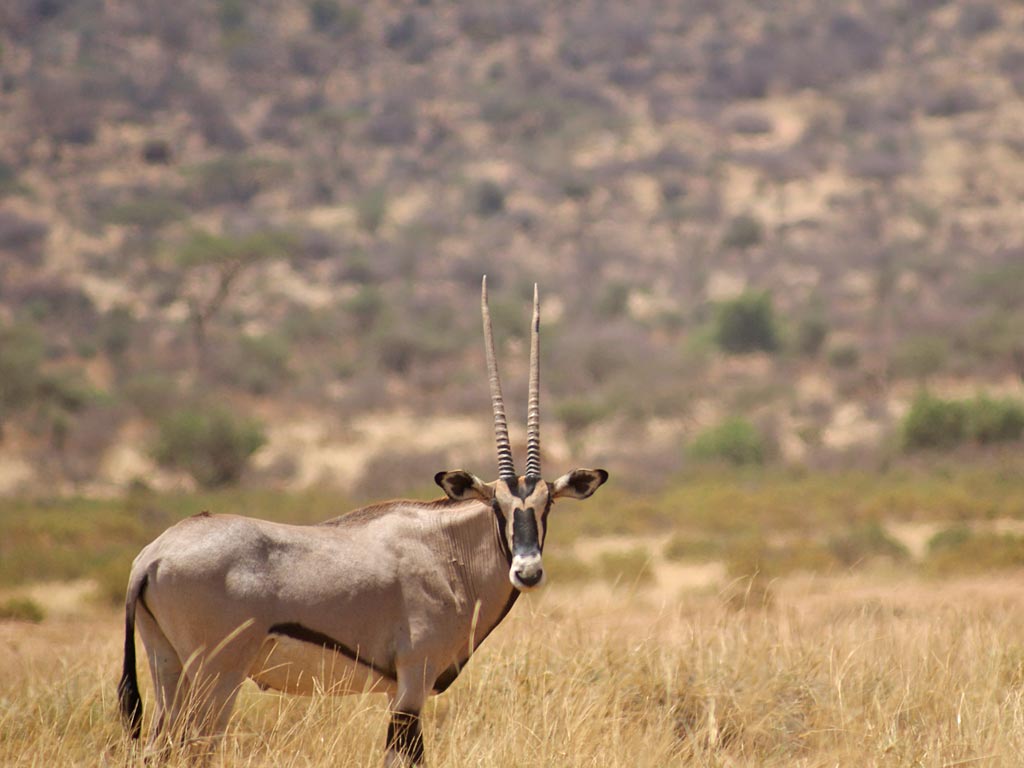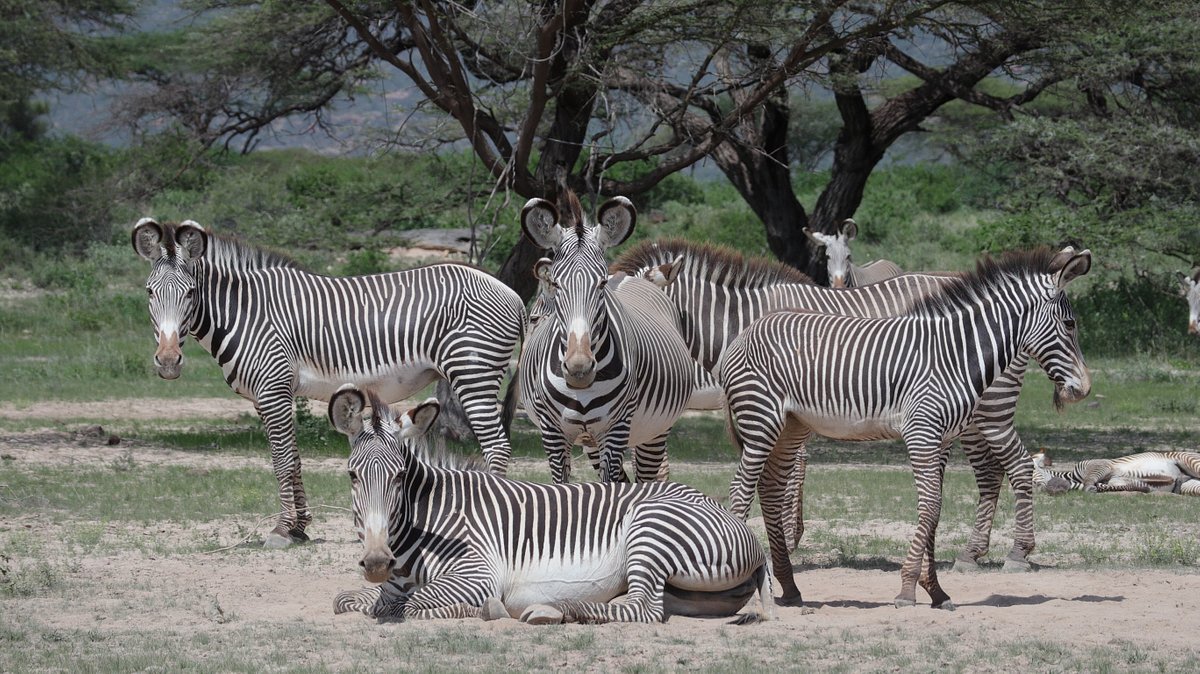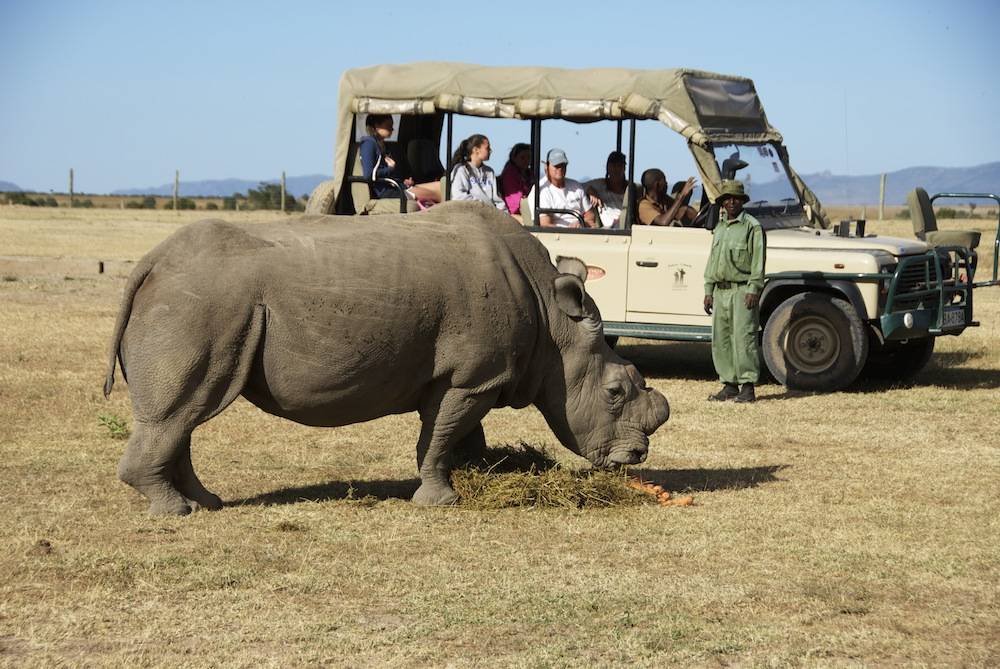Nairobi National Park is located in the heart of Nairobi, the capital metropolis of Kenya.…

Shaba National Reserve
Shaba National Reserve is located in northern Kenya and is one of three national reserves located in the same area. Buffalo Springs National Reserve and Samburu National Reserve are the others. The reserve is located in the Samburu National Reserve’s eastern region. The Ewaso River separates the three reserves and is the primary water source for fauna and locals in the region.
The Shaba national reserve features breathtaking scenery, including riverine forests, open savannah, and dispersed woodland set against the Shaba hills. The reserve is comprised of 239 square kilometers of semiarid grassland. The reserve was named after the 1525-meter-tall Mount Shaba. The mountain is the source of volcanic flow throughout the entire reserve, which has shaped the reserve’s various features.
Local government designated the reserve in 1974, and it is presently administered by the Isiolo County council. It is bordered on the north by Mount Kenya and on the east by Samburu national reserve. Shaba national reserve is situated 355 kilometers to the north of Nairobi. The reserve is accessible by road via Nanyuki, Samburu, and the reserve itself. Alternately, daily flights from Wilson Airport in Nairobi to Samburu National Reserve, where you will be collected up and driven to Shaba National Reserve, are available.
After the rise of Elsa the lioness, who was the kindest lioness in the annals of predators, the park rose to the top of the world’s photographs. They wrote “born free” in 1966 after being raised and adopted by the Adamson family. When news emerged in January 1980 that Joy Adamson was muttered in the reserve, it was a significant loss. Prior to the husband’s return to their native country, she was interred within the reserve next to the grave of Elsa the lioness.
Scenery of Shaba national reserve
The reserve is smaller than the national reserve of Samburu, but it encompasses more than half of the riverine forest, which is home to the unique Acacia elatior and doum palms. Other tree species include woodlands of umbrella thorn acacia, Commiphora, alkaline grassland, and shrubbery. Because of this, Shaba national reserve is considered to be greener than all other national reserves in the region.
Shaba National Reserve’s attractions
Mammals
Even though the reserve is the smallest of all the reserves in Northern Kenya, it is home to numerous species of mammals. All of the creatures on the preserve are permanent residents. It contains rare species such as giraffes, grant’s zebras, klipspringers, hyrax, warthogs, aardvarks, bat-eared foxes, impala, eland, gazelle, kudu, oryx, lions, leopards, Elephants, jackals, hyenas, and bison, among others.
Birds
Over 400 bird species have been documented in the Shaba national reserve. The bird species in all three national reserves, namely Shaba, Buffalo spring, and Samburu, are virtually identical. Due to shared varieties of vegetation, all bird species are shared between the two reserves. The Williams’ lark is the most well-known avian in the reserve, and it resides primarily in the lava-rock areas. Other bird species include the Palearctic, the Acacia tit, the African palm swift, the Northern Brownbul, the palm-nut vulture, the pygmy batis, the falcon, the parrots, the pink-breasted lark, the Seedeater, the secretary bird, the Somali bee-eater, the ostrich, the Chestnut weaver, the starlings, the Sunbird, and the Grey wren-warbler.
Hills and waterfalls
The reserve is comprised of semi-desert vegetation interspersed with shrubbery and forests. Shaba national reserve is dotted with volcanic features such as lava flows and slopes, with Shaba Hill serving as the reserve’s namesake.
Joy Adamson Memorial Museum The museum was constructed in memory of the reserve’s foremost conservationist, the late Joy Adamson. The guest adds a visit to the museum, which is a historical location where all of Joy Adamson’s details and books are preserved. Similar to Born free, information on Elsa the magnificent lioness.
Shaba National Reserve Activities
Game viewing
Game observing is one of the most popular activities in the Shaba national reserve. Entering the African wilderness in a safari 4×4 and observing hippos, crocodiles, lions, leopards, hyenas, and zebras, among others, up close. Due to its limited size and dense vegetation, the reserve’s game drives have a history of success. One can have every worthwhile experience in the shortest amount of time feasible.

Visiting the Joy Museum
Add some exhilaration to your safari through the Shaba national reserve by visiting the renowned Museum Joy Adamson. Well-equipped with all of the conservation tools utilized by the Adamson family during their tenure in the Reserve.
Birding
Shaba national reserve is a birding paradise and home to rare bird species, including the Palearctic, Acacia tit, African palm swift, Northern Brownbul, palm-nut vulture, pygmy batis, falcon, parrots, pink-breasted lark, Seedeater, secretary bird, Somali bee-eater, ostrich, Chestnut weaver, starlings, Sunbird, and Grey wren-warbler. Birding is a year-round activity. When visiting this reserve, you will never be disappointed.
Hiking
The famous Shaba highlands can be reached without prior hiking experience. On the cliffs of the hill, one will be lead by a game ranger who will act as a guide. You will have a clear view of the reserve from above.
The three adjacent reserves are Shaba national reserve, Buffalo Springs national reserve, and Samburu national reserve. They are the gem of Kenya’s Northern province.



